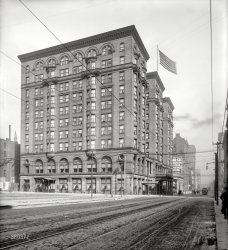
MAY CONTAIN NUTS

Search Shorpy
SHORPY ART

Framed or unframed, desk size to sofa size, printed by us in Arizona and Alabama since 2007. Explore now.
Join and Share
Ad-Free Shorpy
Shorpy is funded by you. Patreon contributors get an ad-free experience.
Learn more.

Recent comments
- Robie House Roof(s)
- There is an interesting novel set here.
- I Was In Berlin
- Pronunciation
- Shell of a Shell
- Never been there but
- BUR-lin
- Hand-made smokes
- Birthplace of Tupperware, or at least its inventor
- Pulp
- Remarkably unchanged in 84 years
- The church is still there ...
- Talk about a smoke show
- Electric Hansom Cab
- I wondered the same thing.
- The location in 2009
- Pill Pusher
- Roll your own
- Rugged and real!
- Civil War history
- Early EV?
- A Charles Purcell - Mama Cass Connection
- Uncle SAAM
- Obfuscation
- One Chocolate Soldier rode away
- Victor Marquis de la Roche
- The Little House Across Way ...
- Vanderbilt Gates
- Vanderbilt Mansion
- You can still see that gate
Member Photos
The Shorpy
Printporium
Printporium
Search Shorpy
Search results -- 30 results per page
- Spitting Image: 1905
- ... St. Augustine, Florida, circa 1905. "In the court of the Hotel Ponce de Leon." Back at the Frog Fountain . 8x10 inch glass negative, ... in the courtyard of what is now Flagler College. The Hotel Ponce de Leon was only open from January through April, so no worries ... Posted by Dave - 10/27/2020 - 5:58pm -
![Spitting Image: 1905 St. Augustine, Florida, circa 1905. "In the court of the Hotel Ponce de Leon." Back at the Frog Fountain. 8x10 inch glass negative, Detroit Photographic Company. View full size.
WarmBasking here outside of Boston in the high humidity and warm temps, I can't help but pity those gentlemen in their dark clothing, coats and ties. It's probably a good thing Tommy Bahama and Jimmy Buffett haven't been born yet.
[Florida was a winter resort. No one went there when it was hot. - Dave]
Still Going StrongThat fountain is still there, still going strong, in the courtyard of what is now Flagler College. The Hotel Ponce de Leon was only open from January through April, so no worries about the attire. It does get chilly in St. Augustine in January/February. The patrons all escaped to the northern resorts in the summer months.
(The Gallery, DPC, Florida, Kids)](https://www.shorpy.com/files/images/SHORPY-4a12453a.thumbnail.jpg)
- Ghost Lobby: 1910
- Circa 1910. "The Concourse, Fort William Henry Hotel, Lake George, New York." Please excuse any spectral guests who might ... Posted by Dave - 12/28/2012 - 10:32pm -
![Ghost Lobby: 1910 Circa 1910. "The Concourse, Fort William Henry Hotel, Lake George, New York." Please excuse any spectral guests who might happen to waft right through you. 8x10 inch dry plate glass negative, Detroit Publishing Company. View full size.
High-class jointNary a spittoon in sight.
Look closelyAnd you will see the feint vision of William Tecumseh Sherman.
[Sorry, no fencing in the lobby. - tterrace]
Why, didn't they wanna keep the goats out?
All the spirits seem EarthboundIf there were any floating about the ceiling then I'd be nervous.
Too much heat?The closest light fitting has a dirty big crack in the glass.
Footprints in Time!Love the footprints on the carpet, truly the marks of the ghosts of Fort William Henry!
All the senses This looks eerily like the great hall of the Schroon Lake Manor, in NY. It has been closed for 60 or more years, and possibly torn down by now, but, as a child, I roamed the grounds in wonder. Amazed at the ballrooms and grand theaters, something I have never seen since. What happened to our sense of grandeur, that we are complacent with miniature theaters and miniscule screens?
(The Gallery, DPC)](https://www.shorpy.com/files/images/SHORPY_4a25304a.thumbnail.jpg)
- No Vacancy
- ... on the tricycle at the pool's edge. Probably rode to the hotel in daddy's lap in the driver's seat.
How times have changed.
(The ... Posted by Dave - 02/19/2008 - 5:52pm -
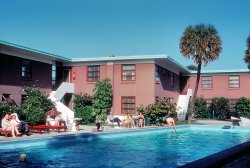
- Tampa Pier: 1900
- ... architectural contribution to Florida was the Tampa Bay Hotel, which stands today as part of the Universtiy of Tampa.
Mail Call! ... Posted by Dave - 08/05/2012 - 1:14pm -
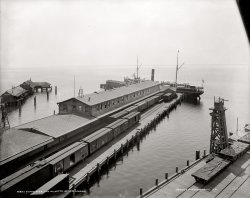
- Look Downward Angle: 1941
- ... entertaining business clients in another room of their hotel suite. This all stopped when a policeman knocked on the door. Really ... Posted by Dave - 02/05/2020 - 11:57am -
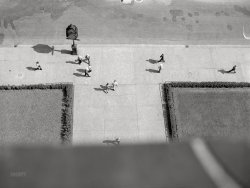
- Meet the Stewarts: 1941
- ... particularly Ma-Dam on the right with the "Welcome to my hotel" look.
(The Gallery, Jack Delano, Portraits, Rural America) ... Posted by Dave - 12/30/2019 - 1:23pm -
![Meet the Stewarts: 1941 June 1941. "The family of Clinton J. Stewart, FSA borrower. White Plains, Greene County, Georgia." Yet another example of Jack Delano's stylized portraiture of Farm Security Administration clients. Avant-gardeners, to coin a phrase. View full size.
What a beautiful old spandrel over the curtain.Even with the exposed beadboard, it had to have been a substantial home at some point.
Evokes Diane Arbus - AlmostThe smiling girl at left would be out of place. Otherwise, this Jack Delano anticipates Arbus.
[You are wrong. The smiling girl has a fly on her nose! - Dave]
Draw the curtain, please!This is such an unusual scene! As if they were on a stage, even the rocking chair looks like a prop.
More like Kubrick I thinkMore specifically, The Shining.
Beautifully CreepyDid Stephen King stage this?
Is Stanley Kubrick channeling?
Love it, whatever, particularly Ma-Dam on the right with the "Welcome to my hotel" look.
(The Gallery, Jack Delano, Portraits, Rural America)](https://www.shorpy.com/files/images/SHORPY-8c06068a.thumbnail.jpg)
- The Broadway Hollywood - Sunset Blvd
- ... Boulevard to Selma and from Vine to Argyle is the new W Hotel and condos. While I'm happy that some of Hollywood's history has been ... Posted by 4allofyou - 09/22/2009 - 5:29pm -

- Everywhere a Sign: 1939
- ...
There is a vacant lot where the Ducktown Hotel used to stand but the house to the right is still there.
This shot ... Posted by Dave - 09/11/2011 - 10:34am -
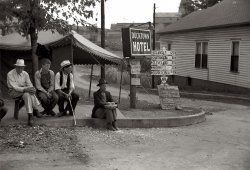
- Seafood City: 1943
- ... I refer Shorpyites to Joseph Mitchell's "Up in the Old Hotel", a compilation of four of his earlier books which anthologize his ... Posted by Dave - 06/13/2012 - 8:19am -
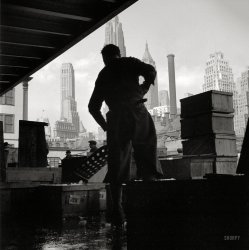
- Gratiot Light: 1901
- ... can enjoy the sunsets from the huge porch of the Grand Hotel.
Gratiot Pronounced in Michigan as GRA-shut, with the 'a' as in ... Posted by Dave - 02/10/2016 - 2:40pm -
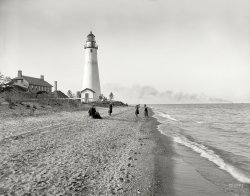
- Cordova Corner: 1903
- St. Augustine, Florida, circa 1903. "Hotel Alcazar annex (Cordova Hotel)." 8x10 inch dry plate glass negative, Detroit Publishing Company. View ... Posted by Dave - 07/20/2017 - 5:47pm -
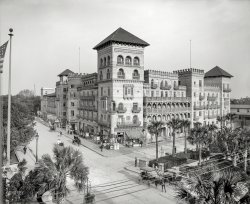
- Park Avenue: 1913
- New York circa 1913. "Park Avenue and Vanderbilt Hotel, south from 36th Street." 8x10 inch dry plate glass negative, Detroit ... tower in the distance is Metropolitan Life tower, now a hotel. And the large rectangular apartment building in the middle is still ... Posted by Dave - 07/15/2016 - 6:34pm -
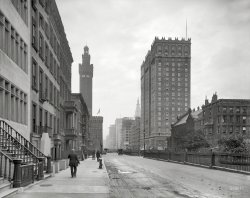
- Cactus and Curio Shop: c. 1940
- ... Clark sits in the native cactus garden outside the Clark Hotel and its Cactus and Curio Shop in Van Horn, Texas, c. 1940. The building now houses the Clark Hotel Museum, along the Texas Mountain Trail in Far West Texas. (Courtesy ... Posted by Ken - 08/02/2007 - 6:18pm -
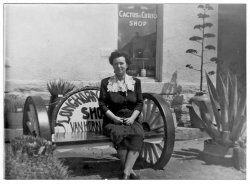
- Winter Wonderland: 1894
- Florida circa 1894. "Hotel Royal Poinciana, Palm Beach." Railroad magnate Henry Flagler's giant wood-frame hotel, which at the time was the largest building in Florida. 8x10 inch glass ... Posted by Dave - 12/03/2015 - 11:34am -
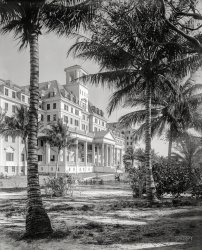
- Times Past: 1906
- ... at a greater range stands the impressive pile that was the Hotel Astor, once near the top tier in Gotham lodgings. I last stayed there in ... Posted by Dave - 01/21/2019 - 1:30pm -
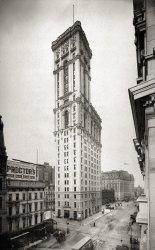
- Cupid's Round-Up: 1903
- ... recent a development. I wonder what's going on inside the hotel! Happy VD to you too, Shorpy!
Chemical Love They're all being ... Posted by Dave - 02/14/2011 - 1:41am -
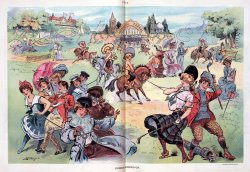
- Dallas Noir (colorized): 1942
- ... Theater Row on Elm Street in Dallas showing the Shorpy Hotel. View full size.
Simply great! One of the best colorization ... Posted by Don Wagoner - 02/08/2010 - 1:14pm -
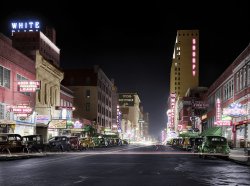
- World Trade Center: 1976
- ... the idea of that kind of tourism. I just stayed at the hotel. I remember the exact time and place I was on that day. It's burned into ... Posted by Dave - 09/11/2021 - 12:44pm -
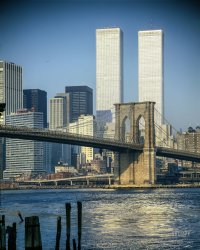
- Testing the Hoses: 1913
- ... and daughters were being entertained at luncheon at the Hotel Plaza by the Ladies' Committee, of which Mrs. John Kenlon, wife of Chief ... Posted by Dave - 09/08/2011 - 12:01pm -
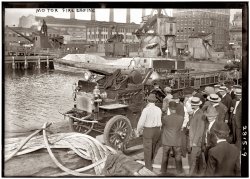
- Summer Idyll: 1899
- ... rocker was in the ladies parlor of the Gilroy Hot Springs Hotel, Gilroy, CA. There are other pieces of furniture from the same company ... Posted by Dave - 07/10/2017 - 11:33pm -
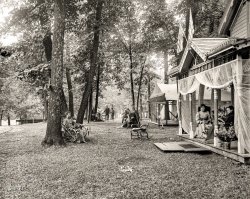
- Ghosts of Gotham: 1910
- ... into the throbbing metropolis at 23rd St. to go to our hotel.
He's Hard to See But he's there. Sitting on the bench, ... Posted by Dave - 01/08/2021 - 2:17pm -
![Ghosts of Gotham: 1910 New York circa 1910. "Riverside Drive and Riverside Park." Replete with spectral strollers. 8x10 inch dry plate glass negative, Detroit Publishing Company. View full size.
Those Special [Spectral] StrollersDarned amateur time travelers, that's what they are. You can always tell.
Showing outThe ghosts are great but the shadows are the stars of the show.
Odd spectorsThis has rather odd spectors. In most of the images around here the spectors are highly motion blurred. These are quite sharp, leading me to think that this is a double exposure, rather than a long exposure, with enough time between the two for the pedestrians and the truck to completely move out of the picture.
Perhaps the photographer took a second picture after the people had moved out of the frame, but forgot to change the film holder, an easy mistake to make.
[Phil Spector, Specter and Spectre. - Dave]
UpdateWhen I arrive in Manhattan by car from the north, I follow the Hudson River down from the George Washington Bridge on the Henry Hudson Parkway between Riverside Drive and the park along the river. Although nowhere near as bucolic as this scene, it isn’t a nasty expressway, in the sense that you can still feel the charm of Riverside Drive and the long narrow park on either side of you as you drive. My heart beats faster the further south I get, until I finally get off the multi-lane road and dive into the throbbing metropolis at 23rd St. to go to our hotel.
He's Hard to SeeBut he's there. Sitting on the bench, near the tree - on the lower path. He appears comfortable.
(The Gallery, Cars, Trucks, Buses, DPC, NYC)](https://www.shorpy.com/files/images/SHORPY-4a19979a.thumbnail.jpg)
- Harbor View: 1908
- ... designed by Henry J. Hardenbergh (architect of the Plaza Hotel, Dakota Apartments, and many other NYC buildings). It, too, is still ... Posted by Dave - 10/10/2012 - 12:57pm -
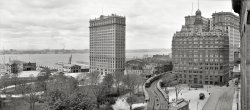
- The Richmond: 1905
- Richmond, Virginia, circa 1905. "Hotel Richmond, Ninth and Grace Sts." The hostelry last glimpsed here. 8x10 ... size.
Milk bottles Every time I see a photo of an hotel on Shorpy, I try to find milk bottles in the windows.
Substantial ... Posted by Dave - 05/21/2020 - 11:58am -
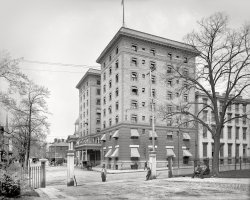
- Swamp Dwellers: 1939
- ... Park. Across the street is the corner of the Willard Hotel . Looking further up 14th Street and on the right hand side is the ... Posted by Dave - 01/29/2018 - 3:03pm -
![Swamp Dwellers: 1939 July 1939. Washington, D.C. "Pennsylvania Avenue at 14th Street N.W." Photo by David Moffat Myers for the Farm Security Administration. View full size.
To kill for today.That 1937 Chevrolet 5 window coupe at the lower left is a favorite among antique auto buffs today.
Civil EngineeringThe rule for sidewalks in grassy areas is leave them out and put them in later where the grass shows people are taking shortcuts.
I count 9 WindowsCan someone please explain how that term came to be? I see the windshield is cut in 2, you have 2 smokers glass, 2 roll ups, 2 deco-views, and the 1 rear glass panel = 5? I love the car, but maybe I don't understand the criteria.
[Windshield isn't counted; side windows are the full openings separated by body pillars, whether or not there are vents in addition to the roll-ups. So this car has 4 side windows and one rear window (aka “backlight”). -tterrace]
I once was lost, but now am foundIt took me a while to figure out exactly where this picture was taken but finally got it. The grassy area in the foreground is now Pershing Park. Across the street is the corner of the Willard Hotel . Looking further up 14th Street and on the right hand side is the National Press Building. The street entering from the right, in front of Whelans Drugs, is E Street. Freedom Plaza is now located between E and Pennsylvania. Wish I knew what the stone fronted building was on the right side of the picture. Last I knew there was a multi-story parking garage there.
[That's the old Washington Post building at 1339 E Street. Also seen here. - Dave] Thank you Dave. You and tterrace never fail to amaze me with the scope of your information.
Remembrance, indeedWe've seen this corner before. The low building at center here occupies the former home of the National Remembrance Shop ("Ask Mr. Foster"), seen in this 1924 photo.
(The Gallery, Cars, Trucks, Buses, D.C., David Myers, Streetcars)](https://www.shorpy.com/files/images/SHORPY-8b37581a.thumbnail.jpg)
- Souvenirs & Curios: 1905
- ... for many years now. In addition to still operating as a hotel, it is also one of the oldest continuously operating jazz venues in the ... Posted by Dave - 07/28/2014 - 11:12am -
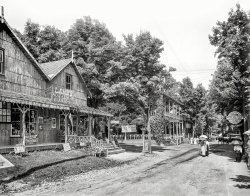
- Ferry Superior: 1905
- ... USS Wisconsin.
Ferry You can see the Atlantic Hotel on the left, the unfinished Confederate Monument (No Johnny Reb on top) ... Posted by Dave - 09/29/2017 - 3:58pm -
![Ferry Superior: 1905 1905. "Waterfront -- Norfolk, Virginia." A going-away view of the ferry Superior. 8x10 inch dry plate glass negative, Detroit Publishing Company. View full size.
Tide or splash?One of those brilliant Shorpy photos that rewards extended viewing. Much as I'd love to gaze at the multi-spired cityscape across the river, I can't help staring in awe at the arcing embrace of the ferry slips, the planks of wood in long curves, attached to the log piles. But as a prairie-born lad, I must ask: is the high-water mark from tide or ferry splash?
[That's from a paintbrush and some sort of preservative. - Dave]
A busy portAn amazing pic in that it shows 4 ferries on a short crossing. Not many cars in those days so mostly shuttling walk-on passengers
"City of Portsmouth" has walking beam side wheel propulsion. "Superior" must be some other system of powering the side-wheels
No navaids of any kind, just lights. Navigation was probably mostly by range lights on the piers to guide docking
Vehicles1905, not too many vehicles around, Ferry is empty but why the seemingly huge access for ... horse carriages?
[See below. - Dave]
TidesWe're tidal here in Hampton Roads, but not THAT tidal. The actual tide line is the chalky white on the slips. The line is also evident (this time as darkened wood) on the pilings supporting the chain hoist beam post.
Some of the churches are still there.This looks to be taken in Porstmouth, looking across the Elizabeth River to Norfolk. In that case, some of the churches shown are obvious, such as Epworth United Methodist Church towards the left of the picture, and the Basillica of Saint Mary of the Immaculate Conception, towards the right. Lower down, just a bit to the left of St. Mary's, you can see historic St. Paul's Episcopal Church, known as "the church with a cannonball stuck in the wall" from the War of 1812; it would be the oldest building in the picture.
Most of the buildings are gone, but curiously, you can see Maury High School about a third of the way from the left, still in use, but almost a mile and a half off. I suppose that's because Maury is on one of the higher elevations in this part of Norfolk. Missing in what you would see from this point today is, towards the right, Harbor Park, towards the center right Waterside, and towards the left of center, Nauticus and the battleship USS Wisconsin.
FerryYou can see the Atlantic Hotel on the left, the unfinished Confederate Monument (No Johnny Reb on top) in the middle.
What is that white building about 2 inches to the right of the Atlantic?
What a magnificent city!
(The Gallery, Boats & Bridges, DPC)](https://www.shorpy.com/files/images/SHORPY-4a12466a.thumbnail.jpg)
- Palm Court: 1905
- ... St. Augustine, Florida, circa 1905. "In the court of the Hotel Ponce de Leon." 8x10 inch dry plate glass negative, Detroit Photographic ... Posted by Dave - 10/27/2020 - 6:04pm -
![Palm Court: 1905 St. Augustine, Florida, circa 1905. "In the court of the Hotel Ponce de Leon." 8x10 inch dry plate glass negative, Detroit Photographic Company. View full size.
FountainI had an great-great uncle who checked in there at about the time this photo was taken. He was 70 years old at the time. I still get a postcard from him every Christmas.
What's the season? By way of the shadows the sun seems to be pretty high.
But both the ladies and the gentlemen are sumptuously dressed. Must have been pretty warm and comfy.
[Not that warm. Florida was a winter resort. - Dave]
Could we put onANY more clothes !
Hey, Herbie --Every time I see a high-crowned bowler like the one on the gentleman at lower left, I try to scour the Internet to find one for myself.
No luck so far.
Isn't this Flagler College now? I toured it a few years ago and it is a very luxurious and beautiful building.
I couldn't imagine having meals in that grand dining room--a far cry from the usual college dining experience.
(The Gallery, DPC, Florida)](https://www.shorpy.com/files/images/SHORPY-4a17591a.thumbnail.jpg)
- Brand New Steamer: 1935
- ... Greenbriers 4-8-4s are named after the railroad-owned hotel, NYC 4-8-2 Mohawks are named after the New York State indian tribes and ... Posted by Lost World - 12/13/2007 - 10:34pm -
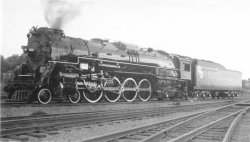
- Downtown: 1939
- ... is the Hyatt at Bellevue, formerly the Bellevue-Stratford Hotel at Broad & Walnut Streets.
The hotel received negative press when the American Legion held their convention ... Posted by Dave - 10/16/2017 - 12:09pm -
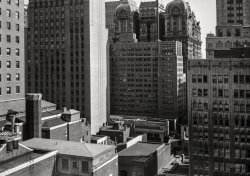
- Planters House: 1901
- St. Louis circa 1901. "Planters Hotel, Fourth and Chestnut." Completed 1893; demolished 1976. 8x10 inch dry ... Posted by Dave - 02/15/2016 - 5:49pm -
